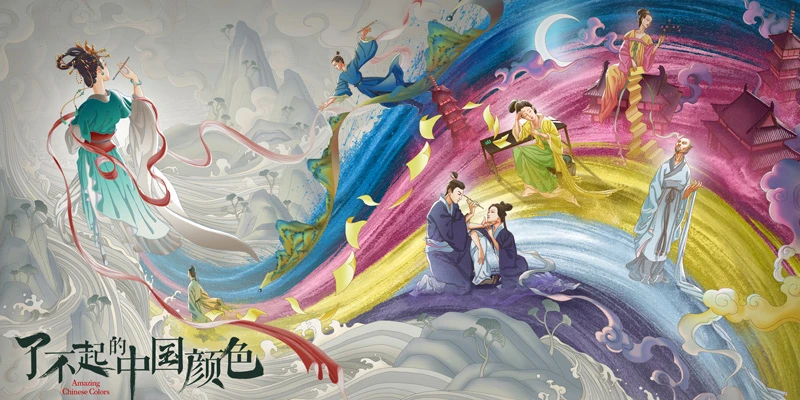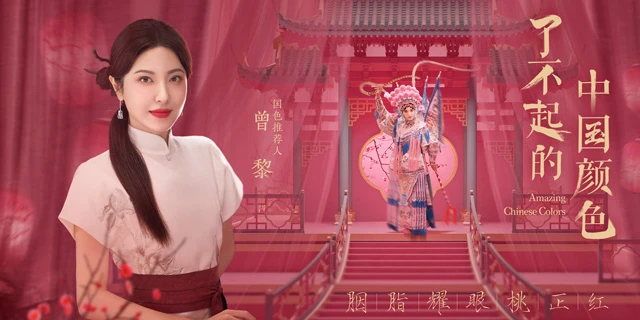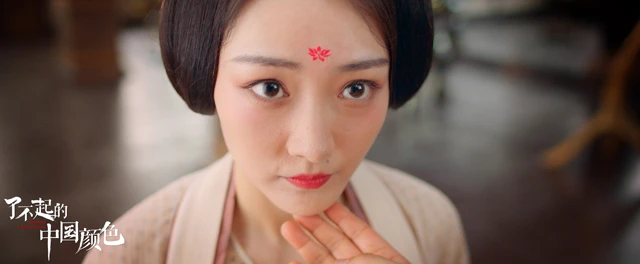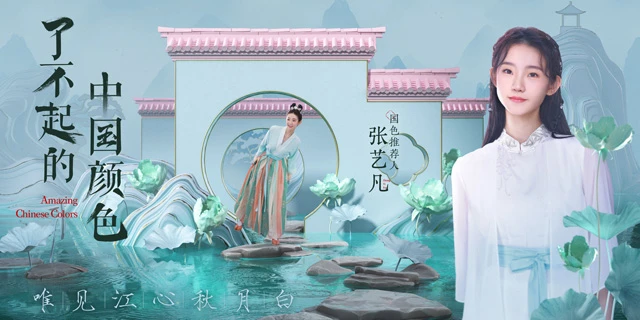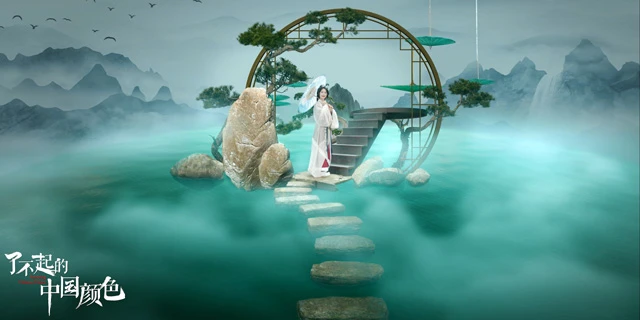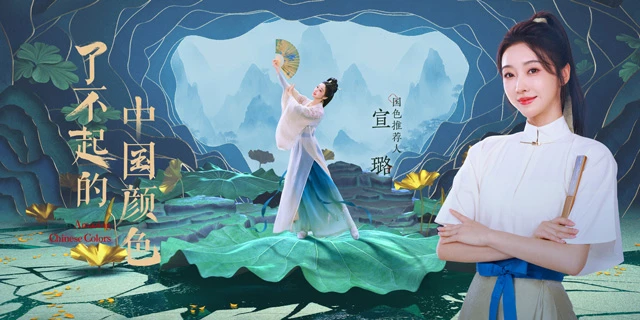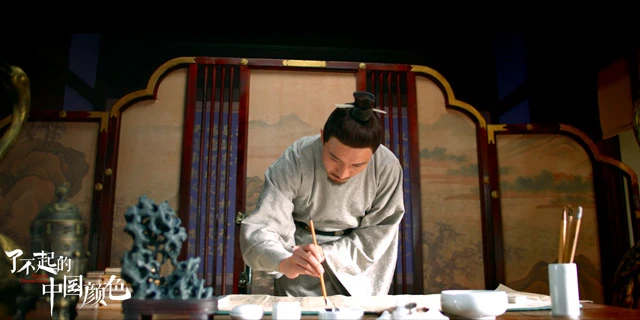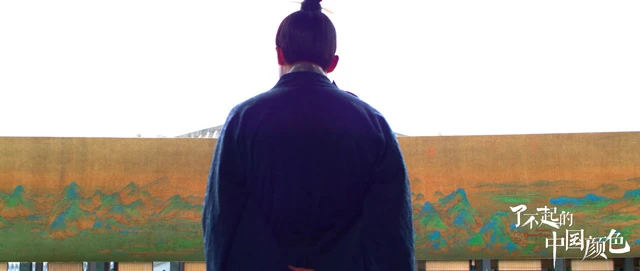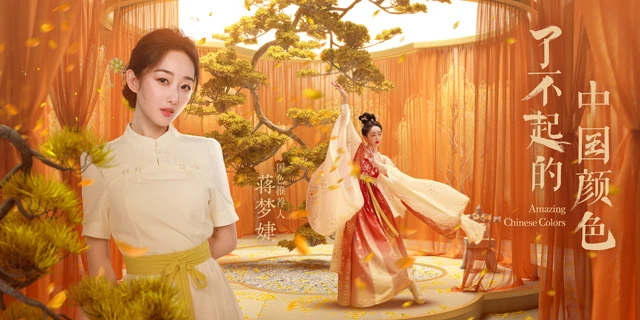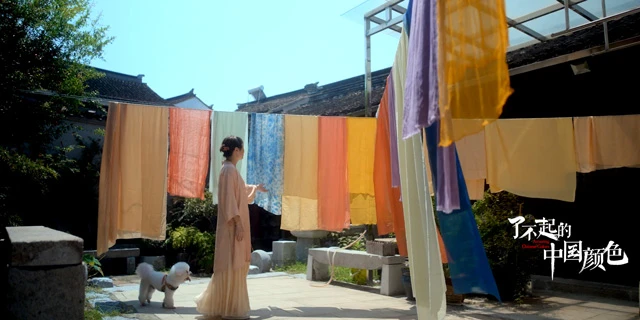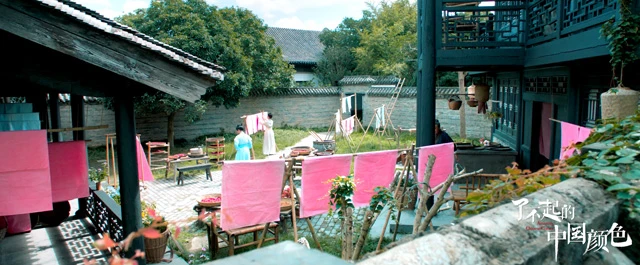Different traditional colors in China are all uniquely named. Why are traditional colors in China named in this way? Since the Tang Dynasty, ancient people used the term "Yan Se (颜色)" as a general term for the colors in nature, giving colors names based on natural phenomena. Unlike the Western classification of primary colors, China divides colors into five main colors: "Chi (赤, red), Huang (黄, yellow), Qing (青, green), Hei (黑, black), and Bai (白, white)".
As the seasons change, colors also transform and blend in countless variations. The recently released documentary series "Amazing Chinese Colors" takes traditional Chinese colors as a starting point to showcase the world of colors.
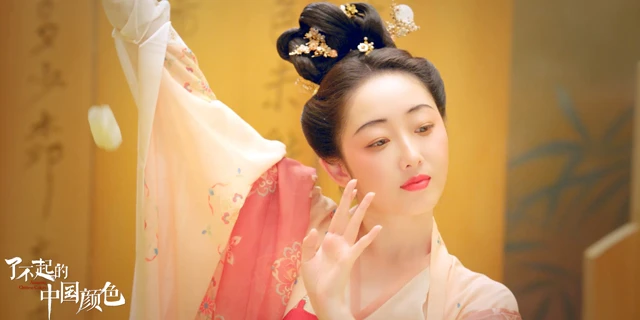
"Amazing Chinese Colors" selects five traditional Chinese colors, and as a point of reference, five artists, namely Zeng Li, Zhang Yifan, Xuan Lu, Jiang Mengjie and Zhang Li, as the recommenders, dig out the history and culture related to such colors, extend the use of such colors in modern oriental aesthetics, show the infinite charm of traditional Chinese colors in the trend, and take the story of each color as the source of inspiration, to create unique traditional Chinese colors in the program. With each color story as the source of inspiration, the show creates a unique space for traditional Chinese colors and presents oriental color aesthetics and femininity through talent interpretation.
Starting from colors, we can trace back to the unique emotional expressions of the Chinese people and the Oriental aesthetics that have been passed down for thousands of years. Through the introduction, interpretation, and interviews of artists, the documentary series provides cultural stories about colors. Each traditional color contains the connotations of history and culture, reflecting the ancient Chinese way of observing and recording the world.
Yanzhi
As a commonly used cosmetic by ancient Chinese women, Yanzhi (胭脂, rouge) has a vibrant and captivating deep red tone, exuding a sense of calmness and nobility. It not only embodies the traditional aesthetic concept of China but also represents the makeup and love of ancient women. The story of ShangGuan Wan'er in the documentary series "Amazing Chinese Colors" provides another interpretation of rouge: counterattack in desperate situations.
Due to disobeying the imperial order, Su Guan Wan'er's face was injured. She used rouge to draw beautiful and delicate patterns on her forehead to conceal the scars, creating a makeup style called "Huadian makeup" and starting a fashion trend. In her hands, rouge serves as both a symbol of beauty and a declaration, transforming adversity into opportunities. Through this makeup, she expresses her circumstances to Empress Wu Zetian, thereby gaining a chance to defend herself and regain her position.
Yue Bai
Yue Bai (月白, moon white) is a color of elegance, named naturally after the moon. In ancient times, the moon was seen as a mysterious and noble deity, and moon white represents the color of moonlight, with a touch of blue in white, possessing a refined and graceful quality. The documentary series introduces the love story of Bai Juyi to explore the theme of moon white and present a story about regrets.
When Bai Juyi was 11 years old, he met a girl who was 4 years younger than him, named Xiangling, and they became childhood friends. Eight years later, as their feelings blossomed, they became each other's first love. Many Bai Juyi's poems all revolve around her. And moon white is one of the proofs of their love. However, due to differences in social status and uncertain future prospects, Bai Juyi's mother severed their relationship. Their marriage ended with no hope, and Xiangling never got married.
In the Ming Dynasty's "The Exploitation of the Works of Nature," it was recorded that moon white is achieved by "dyeing with indigo water, boiling water with Chinese knotweed, half raw and half cooked." The result of this dyeing process is a lighter shade of blue. Moon white is commonly used in various clothing and porcelain, giving people a sense of tranquility and serenity. But beyond its practical use, moon white also represents the moon, symbolizing the longing and emotions between people.
Shi Qing
The color Shi Qing (azure blue) is profound and enigmatic. It is closely connected to the emotions of scholars. In ancient Chinese philosophy, the color "Qing" represents not only the east, but also symbolizes life and the continuity of culture.
In traditional Chinese painting, the use of azure blue to depict landscapes is a classic technique, to create a sense of weight and lushness in the mountains and rocks. The layers of peaks and waves are magnificently portrayed, with vivid and intense colors. The documentary has found a perfect perspective to elucidate the profound national significance of azure blue.
The masterpiece "A Thousand Li of Rivers and Mountains" is currently housed in the Palace Museum. It was created by the 18-year-old court painter Wang Ximeng. Some say that Wang Ximeng "came to the mortal world just to leave behind this painting". In his prime, he devoted all his efforts to painting the emperor, Song Huizong, and his own interpretation and imagination of the rivers and mountains. With timeless colors, he poured out his deep love for his homeland. Within the silent shades of green, the depth and passion of the Chinese nation are engraved.
Song Hua Huang
"Song Hua Huang (松花黄)" originates from the ancient dyeing technique of using plant materials. It is made by boiling pine pollen and yellow bark of the Phellodendron tree to create a dye that is derived from nature, fresh, and elegant.
Plant dyeing uses natural plants as dyes and, through different processes, transforms materials into various colors. The documentary also highlights the technique of "San Fan Jiu Ran (三矾九染)", where the ink is applied first, followed by the use of pigments and multiple dyeing processes until the desired color and texture are achieved.
After multiple layers of dyeing, the color becomes thicker. In order to prevent the subsequent dye from affecting the existing colors, ancient painters used alum and glue to create a protective layer before continuing the dyeing process after it dried. The technique of multiple dyeing and protective layering is known as "San Fan Jiu Ran". Through this dyeing technique, not only can natural and fresh colors be obtained, but materials can also be transformed into various textures and patterns.
Through a vast collection of historical artifacts, images, and literature, "Amazing Chinese Colors" showcases the rich diversity and aesthetic value of traditional Chinese colors, as well as revealing the historical and cultural origins of colors. Furthermore, this documentary combines traditional colors with modern design using contemporary methods, demonstrating their contemporary application value. Moreover, it employs dramatic storytelling and unique perspectives to make us feel the emotional power behind colors.
Seemingly incidental accidental tones have gone through countless refinements, selections, and blends. It is precisely these colors that piece together magnificent and vibrant histories. In the river of time, they leave behind their unique marks.
Chinese traditional colors are taken from the earth and the sky, from everything in the world, the moment a flower blooms, the moment the sun sets, the sudden flash of lightning, the momentary burst of rain, all of which give birth to the beautiful and rich Chinese colors. Chinese traditional color is not just a color, it is the Chinese people's perception of everything, but also the delicate and sensual oriental aesthetics.
Contemporary, traditional Chinese colors from tradition to fashion, from China to the world. These beautiful colors come from the ancient method of nature, but now in the fashion and technology to shine more eye-catching style, beauty, graphic design, architecture, interior design, crafts production, many fields, because of the traditional Chinese colors to join, more icing on the cake. In the new fashion at the same time, gives the product a deeper cultural heritage.
